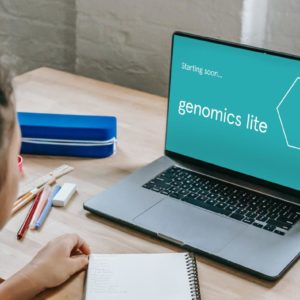This Genomics Lite series explored the legacy of the Human Genome Project, how sequencing methods have changed over the years, and how the genomics revolution has led the way to new jobs in the field.
This series has now finished, but you can watch recordings of the sessions below and continue to use the learning resources.
Session 1. The Human Genome Project: in context with Karen McLaren.
Karen McLaren shares her experience of working on the Human Genome Project and how the world of sequencing has changed since the Project.
Session 2. The Human Genome Project: in the lab ;with Dr Lia Chappel.
Dr Lia Chappell highlights modern sequencing technology, and Kim Judge shows us how minION technology allows for sequencing from anywhere.
Session 3. The Human Genome Project: career pathways with Illumina Lab Researchers.
Scientists from Illumina Lab Services share their career journeys.
Learning Resources
The History of Genomics
Recommended as pre-session resources
- Did you know that the first paper identifying DNA was published in 1871? Check out this timeline of genomics and this timeline of the Human Genome Project to find out more about the history of genomics.
The Human Genome Project
Recommended as post-session resources to accompany session 1
- It’s been 30 years since the Human Genome Project was launched, find out more about how the completed Human Genome Project is being used.
- Watch this video to see the methods used in the HGP to sequence a genome:
- Sequencing isn’t the end of the story, find out more what happens to DNA after it’s been sequenced, how it’s assembled, how genes are identified, and how we can compare different genomes.
Sequencing Technologies: then and now
Recommended as post-session resources to accompany session 2
- Sequencing has come a long way since the Human Genome Project! Find out how it’s changed from the dawn of sequencing in the 1970s, automated in the 1980s, scaled up for the Human Genome project in the 1990s, and how next-generation and third-generation sequencing are being used today.
- Sequencing machines need to be able to work out the sequence of DNA quickly and accurately. How quickly can you sequence DNA?
- Watch this video to see how next-generation techniques can speed up sequencing:
Careers in Genomics
Recommended as post-session resources to accompany session 3
- The field of genomics has grown massively since it started, leading to a range of new career routes and job opportunities. Watch these videos to find out more from 4 researchers:
- Explore more careers in science using career pilot.
Activity: Genome Generation
- There are many important personal, social and ethical questions surrounding genomic advances. Use the Genome Generation activity (or the Express version) to explore different scenarios and the questions they raise.


